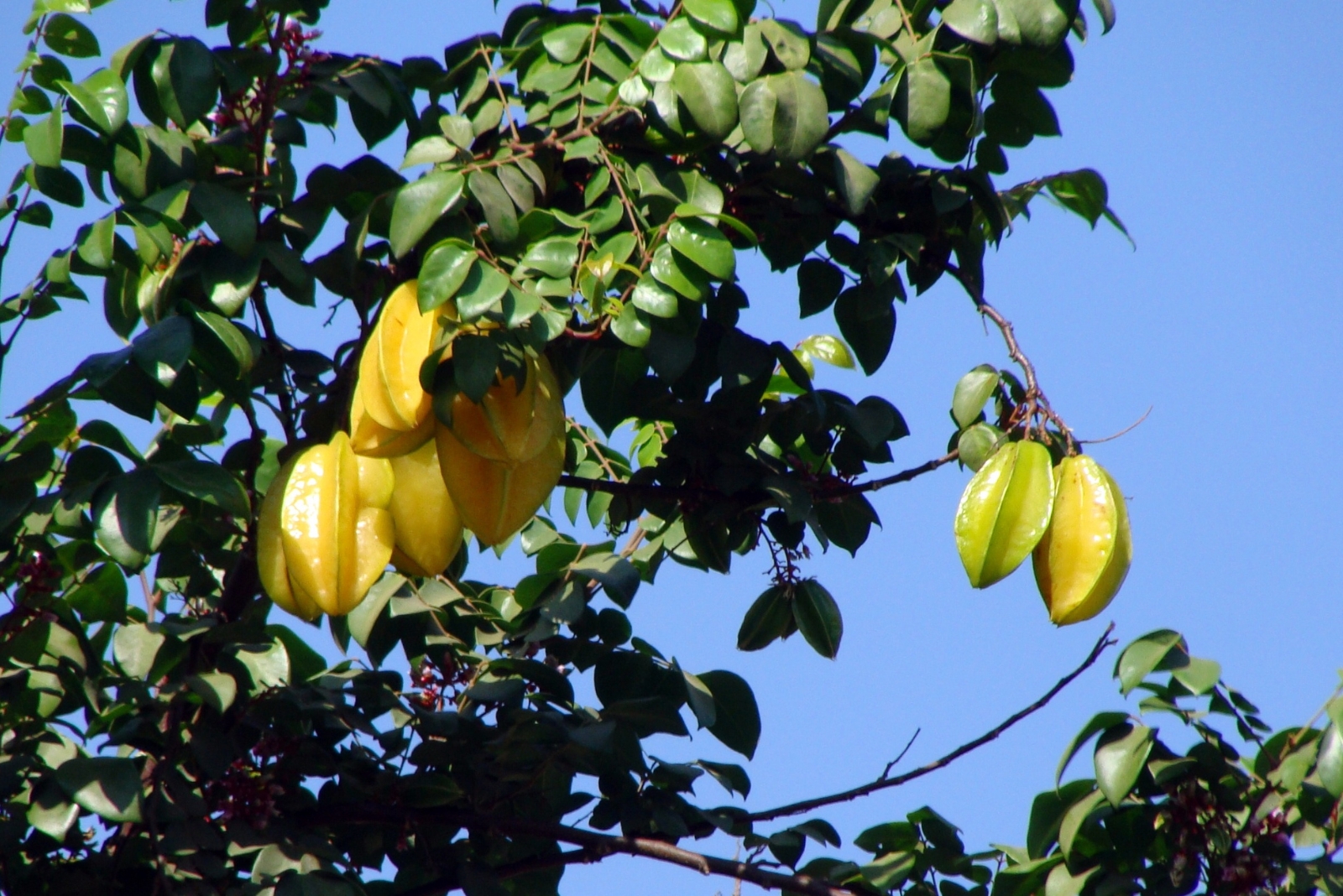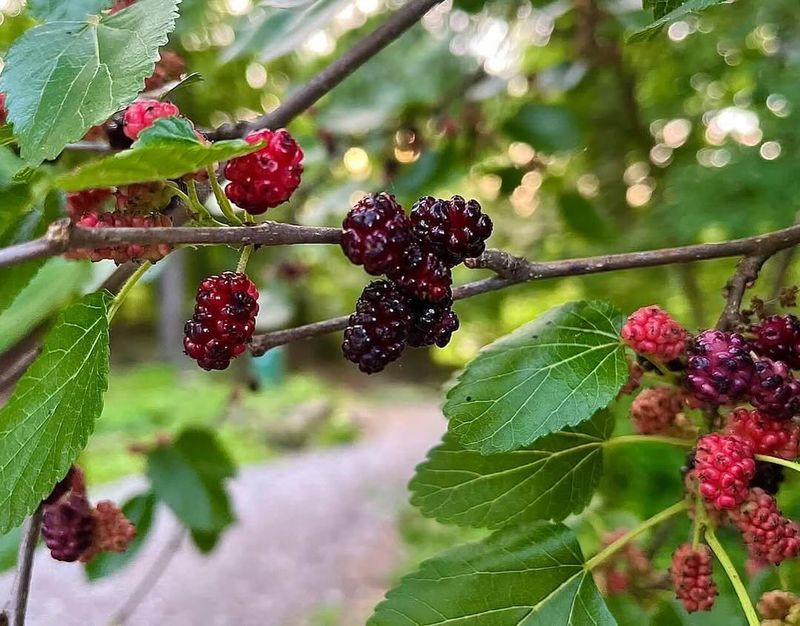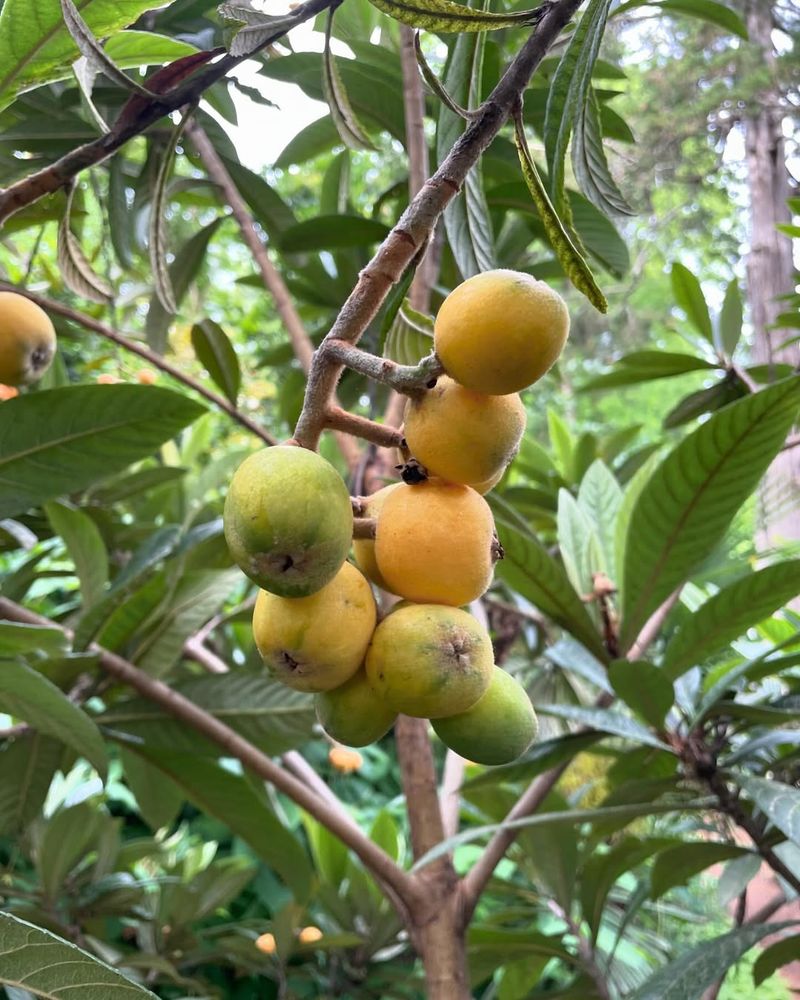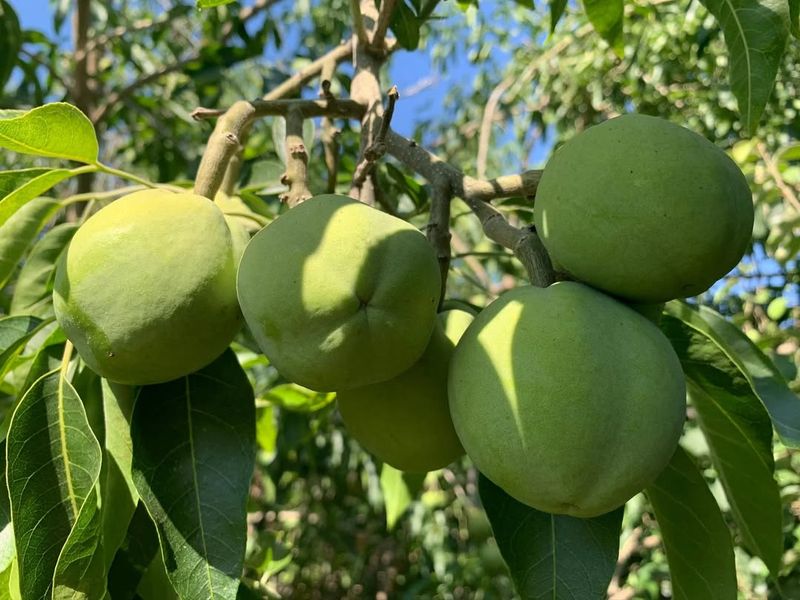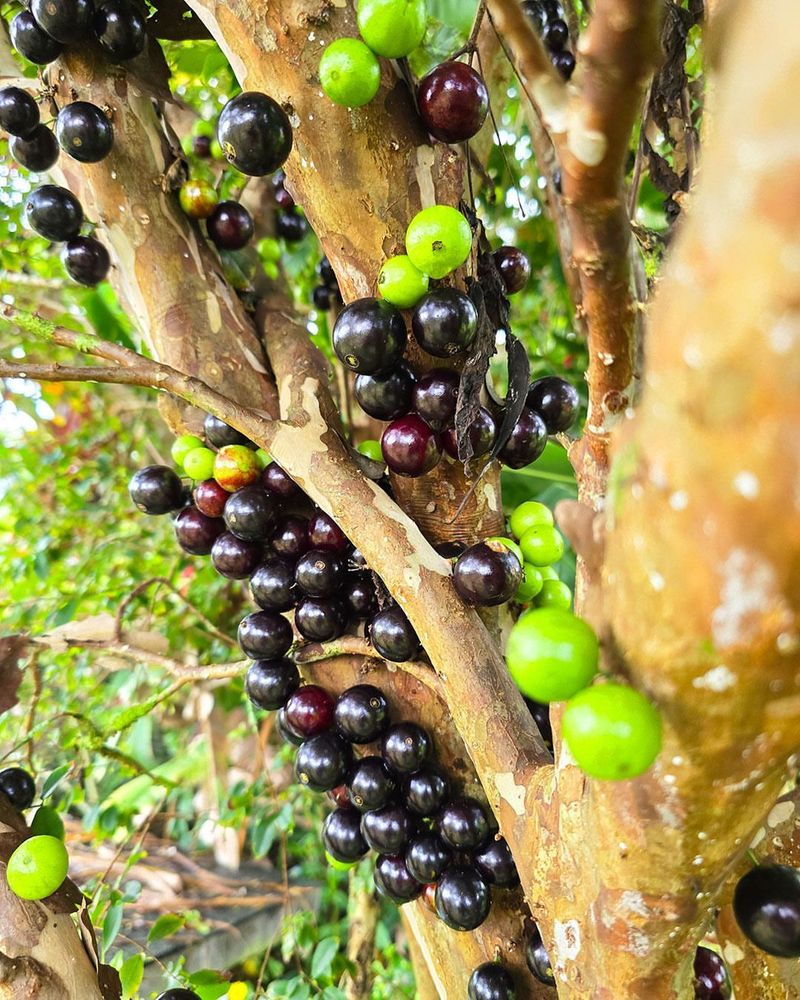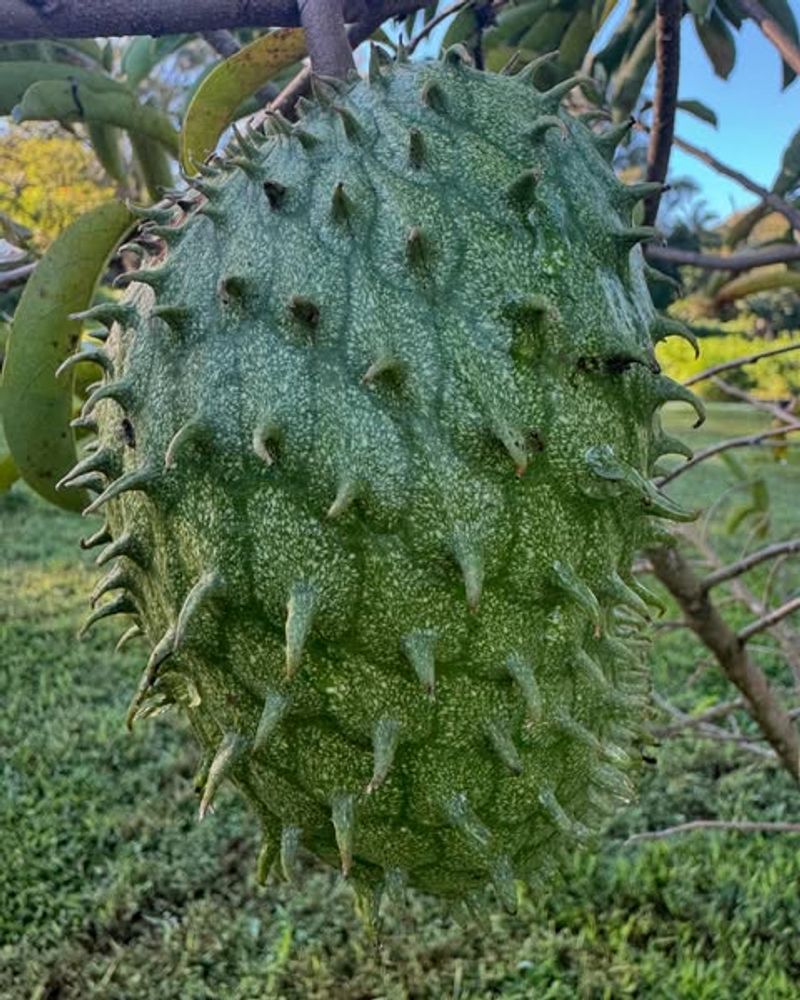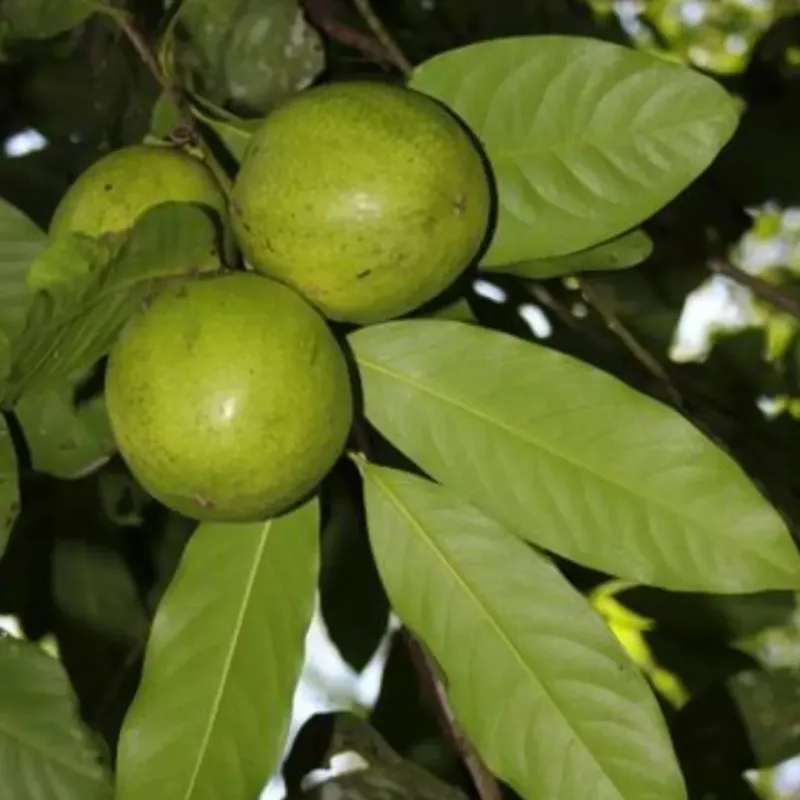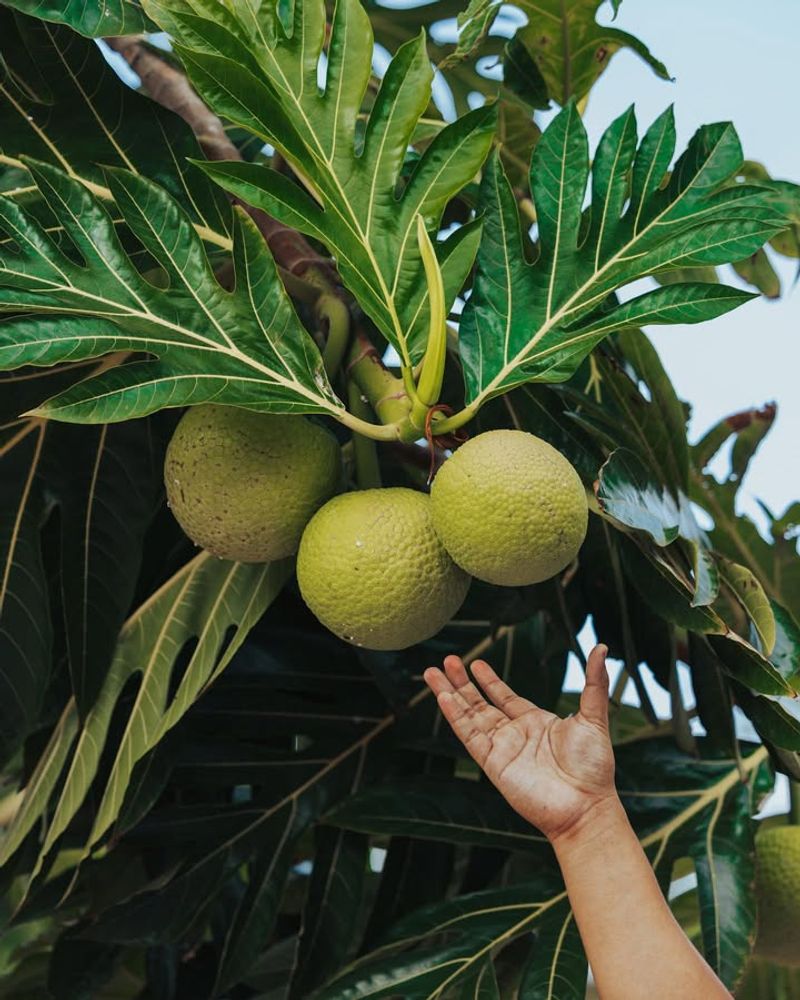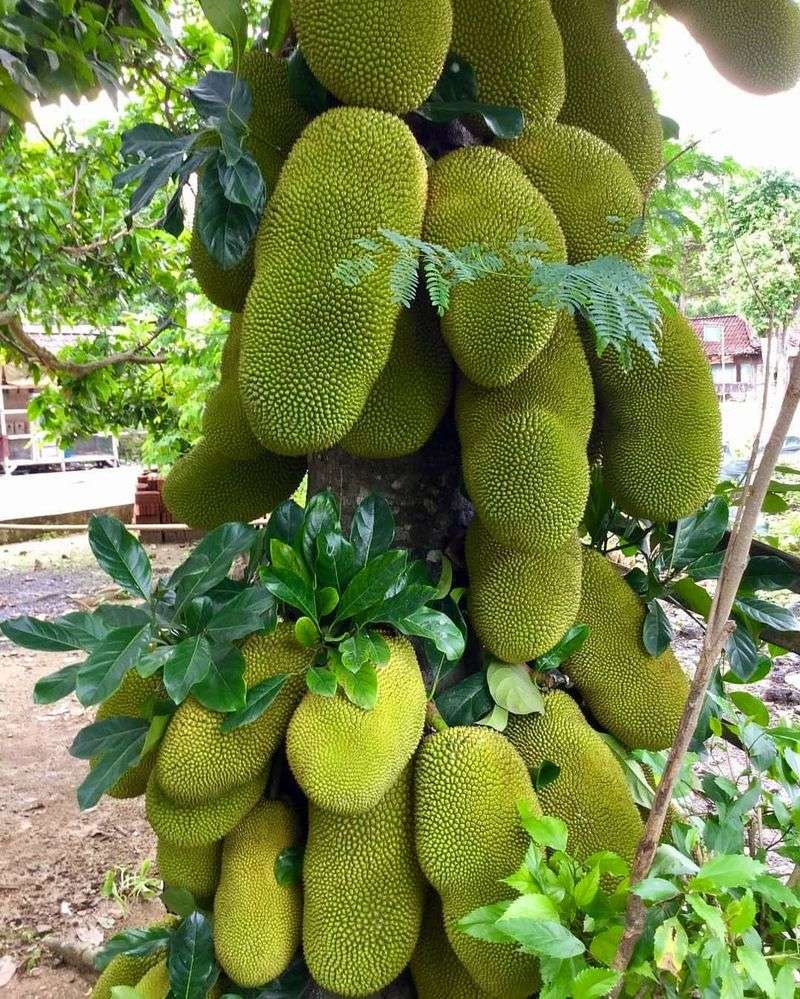Florida’s warm climate seems perfect for growing tropical fruits, and many gardeners rush to plant exotic trees in their yards. Unfortunately, what starts as an exciting dream can quickly turn into a maintenance nightmare.
Some fruit trees grow too large, attract pests, or produce messy fruit that nobody wants to clean up, leaving homeowners with serious regrets.
1. Mulberry Tree
Picture a tree that drops thousands of purple berries all over your Florida driveway, sidewalk, and patio for weeks. Mulberry trees create massive stains on concrete that are nearly impossible to remove, and the constant cleanup becomes exhausting.
Birds love these berries and leave purple droppings everywhere they perch. Your car, outdoor furniture, and walkways will be covered in sticky, staining messes.
While the fruit is edible, most falls and rots before you can harvest it all.
2. Carambola (Star Fruit)
Carambola trees seem like a tropical paradise addition until you realize they produce fruit constantly and abundantly. Most Florida families cannot keep up with the harvest, leading to rotting fruit attracting fruit flies and other pests.
The fallen fruit creates a slippery hazard on walkways and patios. Many people also discover they simply don’t enjoy the taste enough to justify the maintenance.
Additionally, carambola can be dangerous for people with kidney problems, limiting who can safely enjoy the harvest.
3. Brazilian Pepper Tree
Often mistaken for a harmless ornamental, Brazilian pepper is actually an aggressive invasive species in Florida. It spreads rapidly through bird-dispersed seeds and crowds out native plants, causing ecological damage.
The sap can cause skin irritation similar to poison ivy, making pruning a miserable experience. Florida law even restricts planting this tree in many areas.
Removal is expensive and difficult because it resprouts vigorously from cut stumps and root fragments.
4. Loquat Tree
Loquat trees grow massive and produce more fruit than any family could possibly eat. The soft, mushy fruits drop constantly during fruiting season, creating a sticky mess that attracts raccoons, possums, and swarms of insects.
The large leaves also drop year-round, requiring frequent raking. Many Florida homeowners plant loquats for the novelty but quickly tire of the endless cleanup.
Birds feast on the fruit and spread seeds everywhere, creating unwanted seedlings throughout your landscape.
5. White Sapote
White sapote trees grow enormous, often reaching 30 to 50 feet tall and equally wide. Their aggressive root systems can damage Florida sidewalks, driveways, and even home foundations, causing costly repairs.
The fruit ripens unpredictably and falls without warning, creating bruised, rotting messes. Most people find the flavor bland and uninteresting, making the tree’s size completely unjustified.
Pruning to control size is difficult because the trees grow back vigorously and require professional help.
6. Jaboticaba
While jaboticaba produces fascinating fruit directly on its trunk, the tree is incredibly slow-growing and demands constant attention. It requires specific soil conditions, regular fertilization, and precise watering schedules that many Florida gardeners find exhausting.
The fruit spoils within days of ripening, making it nearly impossible to harvest and use efficiently. Fallen fruit ferments quickly, attracting clouds of fruit flies.
Most gardeners realize the novelty doesn’t outweigh the high-maintenance demands and disappointing yields.
7. Soursop
Soursop trees are surprisingly finicky despite Florida’s tropical climate. They suffer from numerous pest problems, including scale insects, mealybugs, and fruit borers that require constant monitoring and treatment.
The large fruits often split and rot before fully ripening, wasting the tree’s energy. Fungal diseases frequently attack leaves and fruit in Florida’s humid conditions.
Many gardeners discover that soursop demands far more care than they anticipated, with disappointing harvests that rarely justify the effort invested.
8. Persimmon (Non-Astringent Varieties)
Persimmon trees produce beautiful orange fruit that seems delightful until harvest season arrives. The soft, ripe fruit drops constantly and creates a slimy mess that stains everything it touches.
Wildlife, especially raccoons and opossums, are drawn to the sweet fruit and make nightly raids. The fallen fruit ferments quickly, producing unpleasant odors and attracting yellow jackets.
Cleanup becomes a daily chore during the extended fruiting season, exhausting even the most enthusiastic Florida gardeners with the relentless mess.
9. Black Sapote
Black sapote, nicknamed the chocolate pudding fruit, sounds more appealing than it actually is for most homeowners. The trees grow quite large and produce abundant fruit that most people find unappealing despite the creative marketing name.
Fruit ripens unevenly and drops when overripe, creating dark, mushy stains. The flavor is an acquired taste that many find disappointing.
With such a large footprint and messy habits, black sapote rarely proves worth the space it demands in typical residential Florida landscapes.
10. Breadfruit
Breadfruit trees are magnificent tropical specimens that simply grow too massive for most Florida yards. They can reach 60 feet tall with equally wide canopies, overwhelming residential landscapes.
The enormous fruits weigh several pounds each and drop with dangerous force. Few American families know how to prepare breadfruit properly, so most of the harvest goes to waste.
The giant leaves also create significant debris, requiring constant cleanup and clogging gutters when they inevitably fall throughout the year.
11. Jackfruit
Jackfruit trees produce the world’s largest tree-borne fruit, with individual specimens weighing up to 80 pounds. When these massive fruits drop, they can damage roofs, cars, and anything unfortunate enough to be underneath.
The trees themselves grow enormous and require significant space. Processing the sticky, complex fruit is labor-intensive and messy, discouraging most Florida homeowners.
The strong, distinctive smell of ripe jackfruit also bothers many people, making this tropical giant more trouble than it’s worth for typical yards.

